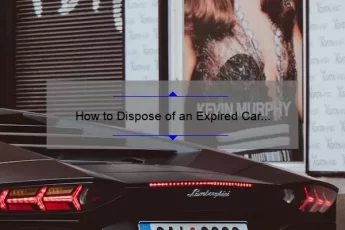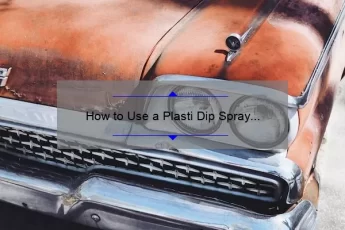If you’re wondering if your car can run on E85 fuel, read on. E85 fuel is a blend of ethanol and gasoline that is higher in octane than regular premium gas. This fuel offers several advantages, such as higher power and knock resistance. It has an octane rating of 105 in the US rating system, compared to 91 or 93 for regular premium gas.
FFVs
Many automakers are making vehicles that can run on ethanol and are labeling them as FFVs. These vehicles are identical to their non-FFV twins, but have an internal software update that allows them to use ethanol instead of gasoline. These cars will still need traditional gas to operate, but they will save money on fuel costs and could reduce U.S. oil consumption if just a small portion of their owners chose to switch to e85.
Most FFVs are designed to run on ethanol and gasoline mixtures of up to 85%. The resulting fuel is known as E85, and it is available at more than 2,500 gasoline stations in the U.S. Although this type of fuel may be less expensive, it still has less energy and may decrease your vehicle’s gas mileage. Additionally, you’ll have to factor in the cost of maintaining your FFV, and the cost of fuel and maintenance.
FFVs can run E85 or gasoline, and the Department of Energy reports that there are about 22 million E85-compatible vehicles on the road. With more public stations opening up, the number of vehicles that can run on ethanol is likely to increase. The fuel burns cleaner than gasoline and produces fewer greenhouse gases.
Although most FFVs are not certified to run on E85, the performance of a car that can run on ethanol will not suffer. Ethanol has a higher octane number than gasoline, so it can handle higher compression without engine damage. However, it is important to follow the manufacturer’s instructions to make sure your car is ready to run on ethanol.
You can tell if your car will run on e85 by looking at its fuel-designation sticker. This type of sticker is often located inside the fuel door. Alternatively, you can look in your owner’s manual to find out the fuel type of your vehicle. It should also be noted that the fuel used in a vehicle must be at least 85% ethanol.
The fuel quality of FFVs is similar to that of conventional gas vehicles, so you can drive on ethanol in winter. The ethanol content in a vehicle’s fuel can vary by geography, so it’s important to ensure that it is not too high. A blend of ethane and gasoline will not hurt your car’s performance, but it will decrease the mileage.
It’s important to note, however, that ethanol is not as clean as gas and can damage parts of a vehicle’s fuel system. In addition to damaging rubber O-rings and injectors, ethanol can even damage a car’s computer. Although the cost of E85 is cheaper than gasoline, a typical FFV will get less gas mileage than its gasoline counterpart.
Regular gas
You can run regular gas in a car with E85 fuel, but you must know that it may damage the engine. In some cases, it will trigger the Check Engine Light to come on. In these cases, you should use regular gas to top off your tank. Regardless of the type of fuel you use in your vehicle, make sure to read the owner’s manual.
Ethanol, also known as E85, is a plant-based alternative to gasoline. It is typically produced from corn, but some sugar-producing countries produce it as well. The blend is known as E85 and it comes in a wide range of percentages, ranging from 51 percent to 83%. In addition to reducing pollution, using E85 also makes cars cheaper to operate. The right fuel for your car is important for its performance, as well as its long-term health.
E85 is not as pure as regular gas, but it is much cleaner than standard gasoline. It does not produce harmful smog particles. However, vehicles using E85 fuel waste more fuel than vehicles running on pure gasoline, and they run more slowly in cold weather. They may also be harder to start than conventional gasoline.
When used correctly, E85 can be mixed with regular gas. However, you must check with your car’s manufacturer before you do this. Although ethanol-gasoline blends have lower mileage ratings than conventional fuels, the lower price per gallon offsets this shortcoming.
Regular gas can run in e85 cars, but it is not recommended for normal cars. It can also damage non-metallic components. It can cause rubber gaskets and seals to break down. However, it is still an option for some vehicles. For those who have a hybrid vehicle, it can be a good option for your vehicle.
E85 gas can be difficult to pump. Because it is hygroscopic, it tends to attract moisture from the air. As a result, it can damage engine parts and components, including injectors. It can also cause water damage to lines and regulators. This means that the pumps need to be checked regularly. If you’re not careful, you can damage your engine with e85 gas.
Fortunately, Iowa has enacted a law requiring the use of E85 fuel in cars. EPA has approved E15 in vehicles since 2001 and many manufacturers, including Ford, have also approved it. However, Volvo and Mazda have not yet approved it. E15 is safe to run in most vehicles, even if they weren’t built specifically to run on the fuel.
One of the main benefits of E85 is its cost. It’s approximately 50 cents to $1 cheaper than standard gasoline. Moreover, it is 85% crop-based, meaning that it burns cleaner than regular gasoline. As a result, it’s also less harmful to the environment than regular gasoline. However, e85 is less efficient during cold weather, and you’ll have to refill more often to compensate for its lower efficiency.
E85
If you’re looking to save money at the pump, you might be asking yourself, “Can my car run on ethanol?” But the answer isn’t quite that simple. To make ethanol work as well as regular gasoline, your car must be equipped with a flex fuel system. Also, you may not be able to find E85 fuel everywhere.
The good news is that E85 is completely safe to use in your car, but you do need to follow the instructions provided by your manufacturer. You should also make sure that your car is built to run on E85. Using any fuel that’s not specifically made for ethanol in your car can cause a few issues.
Ethanol is harsher on gasoline than ethanol, so it can damage the engine if it’s not engineered for it. It can also dry out parts like fuel lines, O-rings, and plastics. That’s why you should avoid using E85 unless you’ve purchased a car specifically designed to run on flex fuel. Look for a green badge on the back of your vehicle that says “Flex Fuel” or “E85.”
In addition to a flex fuel powertrain, you must also have parts and software designed to handle E85. Because ethanol is more corrosive than gasoline, it’s crucial to have the right fuel-to-air ratio in your car. If you can find a car with the proper software, you’ll be saving money at the pump and cutting your carbon footprint.
Ethanol is not as dangerous as pure gasoline, and it can help extend the life of your engine by making it last longer. Additionally, it is an environmentally friendly alternative that’s produced in the USA. Using it as a primary fuel can cut your vehicle’s carbon footprint by up to 50%. This fuel is the next best thing to an electric car.
You can mix E85 with regular gas. However, there’s no practical advantage to mixing the two. It’s safe for your car, but you should never do it on a regular basis. The fuel may deteriorate rubber parts and cause pre-ignition. Also, your fuel pump must be sized to handle E85. Furthermore, a cooler spark plug can help prevent pre-ignition.
If you’re thinking about switching to ethanol as your primary fuel, you should be aware of the risks associated with it. It’s important to keep in mind that ethanol has higher combustion temperatures than unleaded gasoline. This lowers the risk of premature ignition and is ideal for racing vehicles.
If you’re unsure whether your car can run on e85 fuel, you can consult a mechanic. Many cars can handle the extra fuel, but not all regular cars can handle it. Also, regular cars may not be able to withstand e85 fuel over time. It may also damage gaskets and rubber seals.








